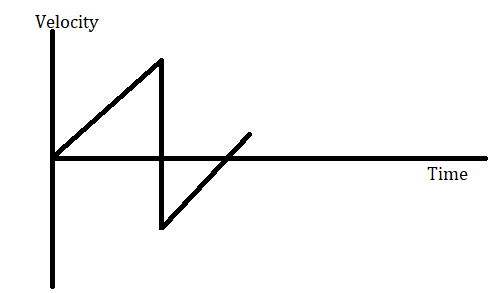The conceptual problem I am having difficulty with is something like this:
If a bouncy ball is dropped from some height $h$ and rebounds to a height of $0.75h$ in some time $t$ (for example), what is the balls acceleration at the instant when it hits the ground?
Here's what I think:
I assume that the initial speed of the ball is $0 m/s$ and that it reaches a maximum velocity just before hitting the ground. The instant the ball touches the ground, the velocity becomes $0 m/s$ again, after which it starts accelerating upward.
Drawing the velocity time graph, I have something like this:
Not exactly the best diagram, but I hope that it gets my idea across.
My question is then, does this mean that the acceleration at the instant that the ball hits the floor is $\infty$? (since slope of the v-t graph will approach $\infty$)


